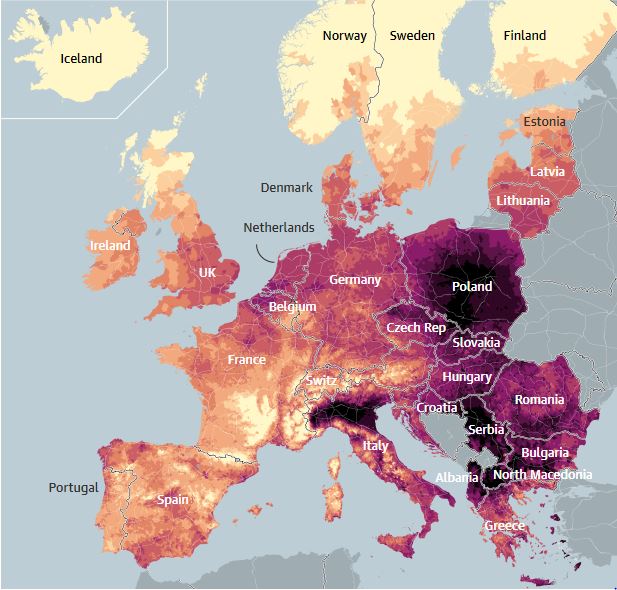
Newsroom
Europe is currently in the throes of a severe public health emergency, marked by dangerously high levels of air pollution prevalent across nearly all regions of the continent. This troubling revelation stems from an exhaustive analysis conducted by The Guardian, drawing from data collected by 1,400 monitoring stations. Astonishingly, a staggering 98% of Europeans find themselves residing in areas where the average annual concentrations of fine particulate matter exceed the recommended limits established by the World Health Organization (WHO).
Rel Vermelen, a distinguished professor of environmental epidemiology at Utrecht University, spearheaded a collaborative research effort spanning Europe that assembled this critical dataset. Vermelen underscored the gravity of the situation, emphasizing, "This is a serious public health crisis."
The measurements in question pertain to minuscule suspended particles with a diameter of less than 2.5 micrometers, predominantly originating from the combustion of fossil fuels. Primary sources of these microparticles include road traffic, industrial activities, domestic heating, and agricultural practices. Alarming is the fact that some of these particles traverse the respiratory system, entering the bloodstream and impacting virtually every human organ.
North Macedonia finds itself bearing the brunt of this crisis, with nearly two-thirds of its population residing in areas where air pollution surpasses the permissible limit by a factor of four. In specific locales, the air is burdened with nearly six times the recommended levels of pollution, a disconcerting reality that even extends to the country's capital, Skopje.
Eastern Europe is particularly hard-hit when compared to its Western counterparts, with Italy being an exception where the northern regions register pollution levels four times higher than WHO guidelines for microparticle exposure.
 Guardian
Guardian
Within seven Eastern European nations—Serbia, Romania, Albania, North Macedonia, Poland, Slovakia, and Hungary—microparticle concentrations double the WHO's recommended limits are a matter of grave concern.
Sweden and certain northern areas of Scotland stand as exceptions, managing to stay within permissible limits for microparticle levels.
Air pollution has now ascended to a prominent issue on the European stage, with mounting pressure on the European Union to take decisive action against this burgeoning public health crisis. Recently, the European Parliament voted in favor of adopting WHO guidelines for PM2.5 particles by the year 2035.
In response to this dire backdrop, major cities across Europe, including London and Milan, are proactively addressing the issue of air pollution. Initiatives such as the introduction of ultra-low emission zones, traffic reduction programs, and the promotion of walking and cycling are being championed as critical steps in the fight against this pervasive threat to public health.
[With information sourced from The Guardian]
































